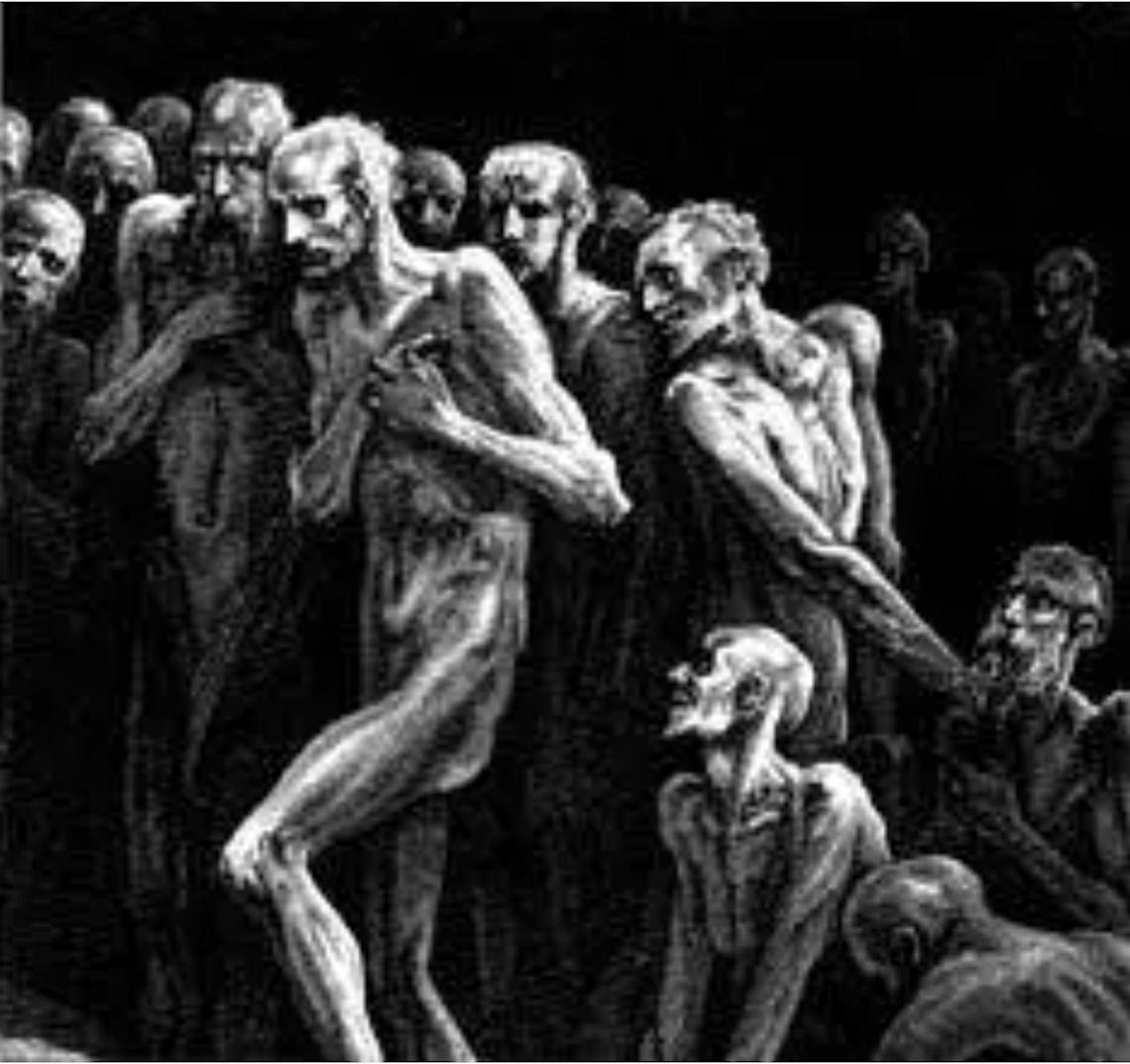 Travel the Unspeakable Depths was a 2006 demo by heavy metal band Azog. Their album art was taken from Gustave Doré’s illustration, The Gluttons.
Travel the Unspeakable Depths was a 2006 demo by heavy metal band Azog. Their album art was taken from Gustave Doré’s illustration, The Gluttons.
Find the album here.
Find Gustave Doré’s illustration here.
Contributed by Gianluca Giuseffi Grippa
Citings & Sightings of Dante's Works in Contemporary Culture
By Cory Balon
By Cory Balon
 “Secondo demo per questi Stige, death/thrash band da Taranto. Il quintetto ha finalmente assestato la sua line-up dove svariati cambi. . . Infatti le quattro tracce presenti in questo ‘Vortex’, sono sì furiose e violente, ma peccano pesantemente sul versante originalità. Gli Stige si rifanno palesemente alla scena americana, sia nel riffing serrato che nei solos sparati a duemila all’ora ( come gli Slayer insegnano ). Dentro di loro serpeggia anche una vena hardcore, decantata a pieni polmoni dal singer Gianfranco Liuzzi, il quale modula la propria voce su uno screaming acidulo e tiratissimo per quasi tutta la durata delle canzoni; ogni tanto Liuzzi tira fuori degli acuti Halfordiani, tecnicamente validi, ma che cozzano con il suo cantare ” classico “. Durante l’ascolto dei brani emerge anche una discreta cura nell’inserire linee altamente melodiche, questo grazie ai due chitarristi, Marcello Bruno ed Emanuele Giummarra, particolare che conferisce un pizzico di ariosità a canzoni comunque potenti e quadrate.” –Andrea Pizzini, metal.it
“Secondo demo per questi Stige, death/thrash band da Taranto. Il quintetto ha finalmente assestato la sua line-up dove svariati cambi. . . Infatti le quattro tracce presenti in questo ‘Vortex’, sono sì furiose e violente, ma peccano pesantemente sul versante originalità. Gli Stige si rifanno palesemente alla scena americana, sia nel riffing serrato che nei solos sparati a duemila all’ora ( come gli Slayer insegnano ). Dentro di loro serpeggia anche una vena hardcore, decantata a pieni polmoni dal singer Gianfranco Liuzzi, il quale modula la propria voce su uno screaming acidulo e tiratissimo per quasi tutta la durata delle canzoni; ogni tanto Liuzzi tira fuori degli acuti Halfordiani, tecnicamente validi, ma che cozzano con il suo cantare ” classico “. Durante l’ascolto dei brani emerge anche una discreta cura nell’inserire linee altamente melodiche, questo grazie ai due chitarristi, Marcello Bruno ed Emanuele Giummarra, particolare che conferisce un pizzico di ariosità a canzoni comunque potenti e quadrate.” –Andrea Pizzini, metal.it
The 2005 demo Vortex by Italian band Stige uses the illustration Styx-Philippo Argenti by illustrator Gustave Doré.
Find the album here.
Find the illustration here.
Contributed by Gianluca Giuseffi Grippa.
By Cory Balon
 “The Italian we speak today, therefore, is not Roman or Venetian (though these were the powerful military and merchant cities) nor even really entirely Florentine. Essentially, it is Dantean. No other European language has such an artistic pedigree. And perhaps no language was ever more perfectly ordained to express human emotions than this fourteenth-century Florentine Italian, as embellished by one of Western civilization’s greatest poets. Dante wrote his Divine Comedy in terza rima, triple rhyme, a chain of rhymes with each rhyme repeating three times every five lines, giving his pretty Florentine vernacular what scholars call a ‘cascading rhythm’ –a rhythm which still lives in the tumbling, poetic cadences spoken by Italian cabdrivers and butchers and government administrators even today. The last line of the Divine Comedy, in which Dante is faced with the vision of God Himself, is a sentiment that is still easily understandable by anyone familiar with so-called modern Italian. Dante writes that God is not merely a blinding vision of glorious light, but that He is, most of all, l’amor che move sole e l’altre stelle. . .
“The Italian we speak today, therefore, is not Roman or Venetian (though these were the powerful military and merchant cities) nor even really entirely Florentine. Essentially, it is Dantean. No other European language has such an artistic pedigree. And perhaps no language was ever more perfectly ordained to express human emotions than this fourteenth-century Florentine Italian, as embellished by one of Western civilization’s greatest poets. Dante wrote his Divine Comedy in terza rima, triple rhyme, a chain of rhymes with each rhyme repeating three times every five lines, giving his pretty Florentine vernacular what scholars call a ‘cascading rhythm’ –a rhythm which still lives in the tumbling, poetic cadences spoken by Italian cabdrivers and butchers and government administrators even today. The last line of the Divine Comedy, in which Dante is faced with the vision of God Himself, is a sentiment that is still easily understandable by anyone familiar with so-called modern Italian. Dante writes that God is not merely a blinding vision of glorious light, but that He is, most of all, l’amor che move sole e l’altre stelle. . .
“‘The love that moves the sun and the other stars.’
“So it’s really no wonder that I want so desperately to learn this language.”
– Elizabeth Gilbert, Eat, Pray, Love (2006)
“In ‘Join the Club’ (2006), Tony has a recurring coma-dream in which he checks into Room 728 (i.e., level seven) at the Omni Hotel in Costa Mesa, using the identity of non-mafia civilian Kevin Finnerty. When the hotel elevator is out of commission, Tony descends a red staircase, slips, and falls to level five. Tony’s surgeon, Dr. Plepler, tells Tony’s wife, sisters and daughter they’re lucky Tony’s at a Level 1 trauma center. (Level one is Limbo[42]).” —Wikipedia
“Australian goth-electro band the Tenth Stage has a self-titled track (2006) that describes the singer’s descent past the nine stages of Dante’s poem to a 10th stage of Hell.” —Wikipedia
All submissions will be considered for posting. Bibliographic references and scholarly essays are also welcome for consideration.
Coggeshall, Elizabeth, and Arielle Saiber, eds. Dante Today: Citings and Sightings of Dante’s Works in Contemporary Culture. Website. Access date.